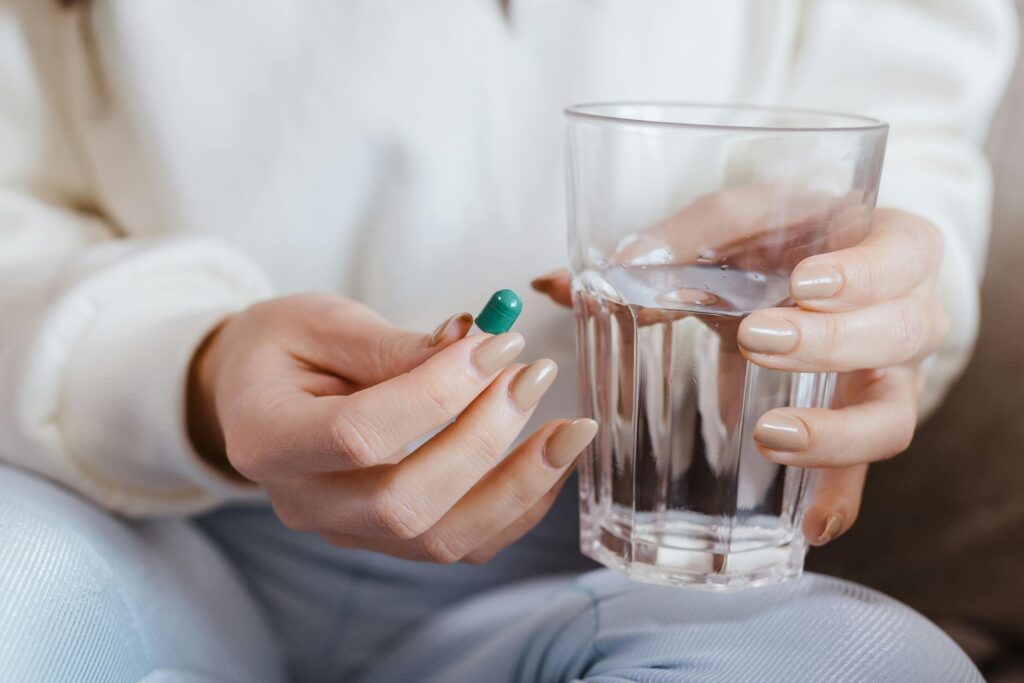When it comes to opioid use disorder (OUD), treatment isn’t optional—it’s essential. Millions of people across the U.S. are living with opioid addiction, and every year, tens of thousands die from overdose. But despite the urgency, many people aren’t aware of the effective, science-backed treatment options available today. Opioid use disorder is not a moral failure. It’s a chronic, relapsing medical condition that alters brain chemistry, impairs judgment, and reshapes how people think, feel, and act. Fortunately, it’s also highly treatable. In this blog post, we’ll walk you through the most effective treatment strategies for OUD—from medication-assisted treatment (MAT) to behavioral therapy, telehealth innovations, and holistic care models. Whether you’re navigating recovery yourself or supporting someone who is, this guide will provide clarity, options, and real hope.
Why Treatment Matters
Before we explore specific therapies, it’s worth underscoring why treatment matters. Untreated opioid addiction leads to a cascade of serious consequences: overdose, organ damage, legal problems, job loss, family strain, and in many cases, death. Yet, treatment can radically change outcomes. According to the 2023 National Survey on Drug Use and Health, individuals who receive evidence-based treatment are up to 75% more likely to avoid relapse and significantly reduce their risk of overdose. But effective care requires more than just detox. Real recovery takes time, structure, and a personalized approach that addresses both physical dependence and psychological healing. That’s why the best treatments combine medication, counseling, support systems, and life-skills development.
Medication-Assisted Treatment (MAT): The Gold Standard
Let’s start with what many experts call the gold standard in OUD care: Medication-Assisted Treatment, or MAT. MAT combines FDA-approved medications with behavioral therapies to treat opioid addiction in a comprehensive, long-term way. There are three primary medications used in MAT:
-
Buprenorphine (brand names: Suboxone, Subutex): A partial opioid agonist that reduces cravings and withdrawal symptoms without producing the full high of drugs like heroin or oxycodone. It can be prescribed in-office by certified providers and is available in pill or film form.
-
Methadone: A full opioid agonist administered daily at specialized clinics. It’s especially helpful for individuals with severe OUD or those who haven’t succeeded with other medications.
-
Naltrexone (brand name: Vivitrol): An opioid antagonist that blocks the euphoric effects of opioids. It requires full detox before use and is typically given as a monthly injection.
MAT does more than manage symptoms—it reduces overdose risk, lowers criminal behavior, and improves employment rates. According to SAMHSA, patients in MAT programs are 50% less likely to die from overdose compared to those who attempt abstinence-based recovery alone.
Behavioral Therapies: Rewiring the Brain
Medication alone isn’t enough. Opioid addiction also involves deep emotional and behavioral patterns that must be addressed for long-term success. That’s where therapy comes in. The most effective behavioral therapies for OUD include:
-
Cognitive Behavioral Therapy (CBT): Helps individuals identify and change negative thought patterns, triggers, and habits that lead to drug use.
-
Contingency Management (CM): Uses a reward system (like vouchers or prizes) to reinforce positive behaviors such as attending therapy or passing drug tests.
-
Motivational Interviewing (MI): A client-centered technique that builds internal motivation and confidence to change.
-
Trauma-Informed Therapy: Addresses underlying trauma, which is a common driver of substance use.
These therapies help patients develop healthier coping mechanisms, build emotional resilience, and understand the root causes of their addiction. Therapy may be offered individually, in groups, or as part of a residential or outpatient program.
Detox Isn’t a Cure: The Role of Withdrawal Management
Many people believe detoxification—ridding the body of opioids—is the first and last step. But detox is only the beginning. While medical detox can help manage withdrawal symptoms and ensure safety during the early days of abstinence, it does not treat the psychological or behavioral components of addiction. In fact, relapse risk is highest immediately after detox if it’s not followed by comprehensive treatment. That’s why most providers recommend medically supervised withdrawal followed by entry into a MAT program, outpatient therapy, or residential rehab. Detox alone is rarely enough to achieve sustainable recovery.
Residential Treatment: A Structured Reset
For individuals with severe OUD, co-occurring mental health issues, or unstable living environments, residential treatment offers a safe and immersive environment to begin recovery. These programs typically last 30, 60, or 90 days and provide 24/7 support, daily therapy, and structured routines. Residential rehab may include medical management, group therapy, wellness activities, skill-building workshops, and family counseling. The goal is to stabilize the patient and help them develop the foundation needed to transition into outpatient care. Studies show that individuals who complete residential programs followed by outpatient support have significantly better outcomes than those who leave treatment early.
Outpatient Programs: Flexible, Effective Care
For many, intensive outpatient programs (IOPs) or partial hospitalization programs (PHPs) provide the right mix of structure and flexibility. Outpatient treatment allows patients to live at home while attending therapy several times per week. This model is ideal for those who need to maintain employment, attend school, or care for family. Outpatient services often include MAT, counseling, group therapy, case management, and drug testing. Some IOPs also offer family therapy and peer support groups. The key benefit is that patients can apply what they’re learning in real time—at home, at work, and in relationships—while still receiving clinical support.
Telehealth Treatment: Access Without Barriers
The COVID-19 pandemic accelerated the adoption of telehealth in addiction treatment, and for good reason. Virtual care makes it easier than ever to access therapy, medical management, and peer support from home. Telehealth services for OUD may include:
-
Online appointments with addiction medicine doctors
-
Digital prescribing of buprenorphine
-
Virtual therapy sessions (individual or group)
-
Remote check-ins and monitoring
-
Text-based coaching or crisis support
According to a 2023 study from the American Journal of Psychiatry, tele-MAT patients showed similar recovery outcomes compared to in-person care—with higher retention rates among rural and underserved populations. For people without transportation, child care, or local providers, telehealth removes major barriers and opens the door to consistent care.
Harm Reduction: Meeting People Where They Are
Not everyone is ready to quit opioids altogether—and that’s where harm reduction comes in. Harm reduction strategies aim to reduce the negative consequences of drug use without requiring immediate abstinence. Examples include:
-
Naloxone distribution: Making the overdose-reversing drug Narcan widely available
-
Syringe exchange programs: Reducing the spread of HIV and hepatitis C
-
Fentanyl test strips: Allowing users to detect deadly additives in their drugs
-
Safe consumption sites (where legal): Offering supervision to prevent fatal overdoses
Harm reduction is not about enabling use. It’s about keeping people alive long enough to engage them in treatment. Numerous studies show that harm reduction services improve survival, reduce public health risks, and often serve as a bridge to formal care.
Holistic and Complementary Therapies
More treatment centers are incorporating holistic approaches to support full-body recovery. While not substitutes for medication or therapy, these options can enhance well-being and build resilience:
-
Yoga and mindfulness meditation: Reduce stress, improve mood, and increase self-awareness
-
Art or music therapy: Offer emotional expression and trauma processing
-
Nutritional counseling: Supports physical healing and mental clarity
-
Exercise and movement: Help regulate mood and rebuild confidence
-
Spiritual counseling or 12-step groups: Provide meaning and peer support
Whole-person healing recognizes that recovery isn’t just about abstaining from drugs. It’s about rebuilding a life that feels worth living.
Peer Support: Recovery With Community
No one should go through recovery alone. Peer support plays a critical role in treatment, offering understanding, accountability, and hope. Programs like Narcotics Anonymous, SMART Recovery, and Refuge Recovery provide free, peer-led meetings in-person or online. Many treatment centers also employ peer recovery coaches—people in long-term recovery who help guide patients through early sobriety, navigate services, and stay motivated. The power of shared experience cannot be overstated. According to a 2022 report by the Recovery Research Institute, individuals engaged in peer support are more likely to stay in treatment and achieve long-term sobriety.
Long-Term Support: Recovery Takes Time
Addiction is a chronic condition—meaning it requires ongoing care and vigilance. The best treatment plans include a long-term support strategy, such as:
-
Continued MAT or medication tapering
-
Weekly or monthly therapy check-ins
-
Relapse prevention planning
-
Access to peer groups and alumni networks
-
Housing, job training, or educational support
Sustainable recovery isn’t about a quick fix. It’s about building a stable, fulfilling life where substance use is no longer needed to cope. Whether it’s six months or six years into recovery, ongoing support is a cornerstone of success.
A Real-Life Example: Maria’s Path to Healing
Maria, a 37-year-old mother of two, began using opioids after a C-section left her in chronic pain. Her prescription ran out, but the cravings didn’t. Within a year, she was buying pills on the street and hiding her use from her family. After a near-overdose, Maria entered a residential MAT program, followed by weekly therapy and telehealth coaching. She joined a local SMART Recovery group and began volunteering at her children’s school. Today, Maria has been opioid-free for four years. “The meds helped my body,” she says, “but it was the people and the purpose that healed my heart.” Maria’s story shows what’s possible with the right treatment and support.
Actionable Takeaways
If you or someone you love is dealing with opioid use disorder, here’s what you can do today:
-
Seek a professional evaluation: Start with your doctor or an addiction specialist
-
Ask about MAT: Buprenorphine, methadone, and naltrexone are proven tools
-
Explore therapy options: CBT, trauma-informed care, and motivational interviewing help
-
Consider telehealth: Especially useful for rural, busy, or homebound individuals
-
Use harm reduction tools: Carry naloxone, use test strips, avoid using alone
-
Build a support team: Find peer groups or a recovery coach
-
Don’t wait for rock bottom: The sooner treatment begins, the better the outcomes
Treatment is not one-size-fits-all. But with so many options available, everyone can find a path that fits their needs and values.
Conclusion: Recovery Is Within Reach
Opioid use disorder is one of the most challenging conditions a person can face—but it is also one of the most treatable. From evidence-based medications and behavioral therapy to peer support and holistic care, there are more options than ever before. Whether you’re just starting to seek help or returning after a relapse, you deserve compassionate, personalized treatment that works. Recovery isn’t about perfection—it’s about progress. One step at a time, one day at a time. The journey may be hard, but the destination—a life of clarity, purpose, and health—is absolutely worth it.
Renew Health: Your Partner in Opioid Addiction Care
Phone: 575‑363‑HELP (4357)
Website: www.renewhealth.com


